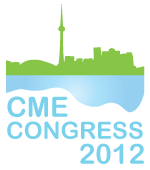Rene Wong (University of Toronto); Petra Breiner (University of Toronto); Maria Mylopoulos (University of Toronto)
Background
In Ontario, efforts to improve diabetes care have centered on fostering interprofessional, collaborative models of healthcare delivery. Recently, traditional, hospital-based diabetes programs (HPs) have been scaled down and funding directed to new community-based programs (CPs). However, this change has not had the anticipated impact on diabetes care. We sought to explore the evolving relationships between the HPs and CPs during this time of transition in diabetes care delivery.
Methods
Using a grounded theory approach, semi-structured interviews were conducted with a purposive, theoretical sample of 22 health professionals in a large, urban center in Ontario, Canada. Emergent themes were identified by the research team through a process of constant comparative analysis.
Results
Three key, interconnected themes emerged: professional identity and boundary redefinition, legitimacy and. vulnerability. HPs and CPs felt pressured to redefine their professional identities and boundaries in order to legitimize themselves as separate entities, yet were not fully aware of each other’s boundaries. CPs felt isolated from the rest of the diabetes community, leaving providers feeling like they were functioning out of scope of their practice. This fueled their sense of vulnerability, leading to job dissatisfaction and staff turnover, further perpetuating concerns about the legitimacy of the CPs.
Conclusions
This research demonstrates that in a new, government-imposed model of diabetes care delivery, there are substantive challenges that impede a movement towards truly effective inter-professional collaborative practice between CPs and HPs. The results are discussed in light of organizational sociology theory, highlighting implications for policy makers and educators.
Funding Sources
This work is supported by a AFMC-SCCME CME/CPD Research Fund





